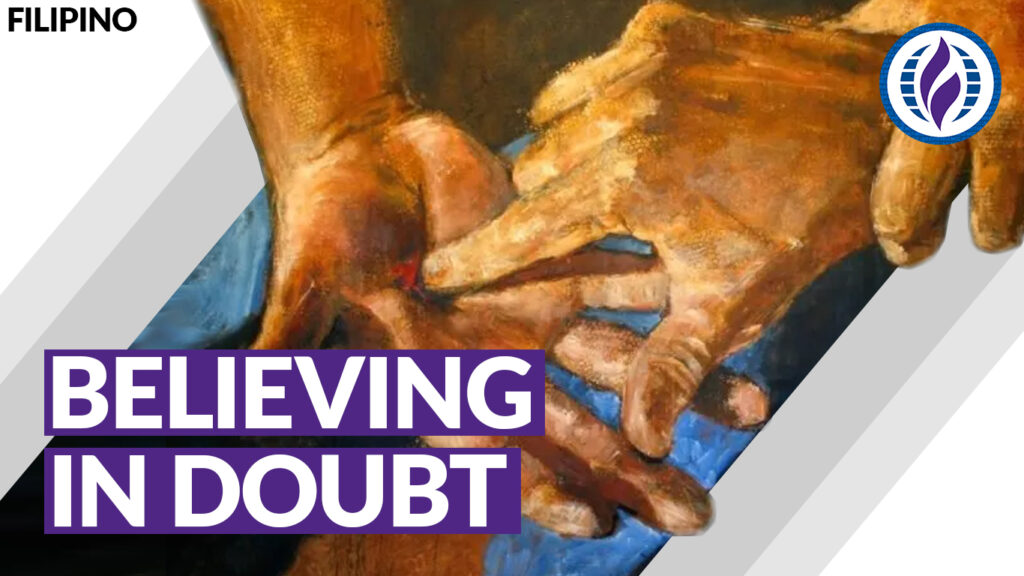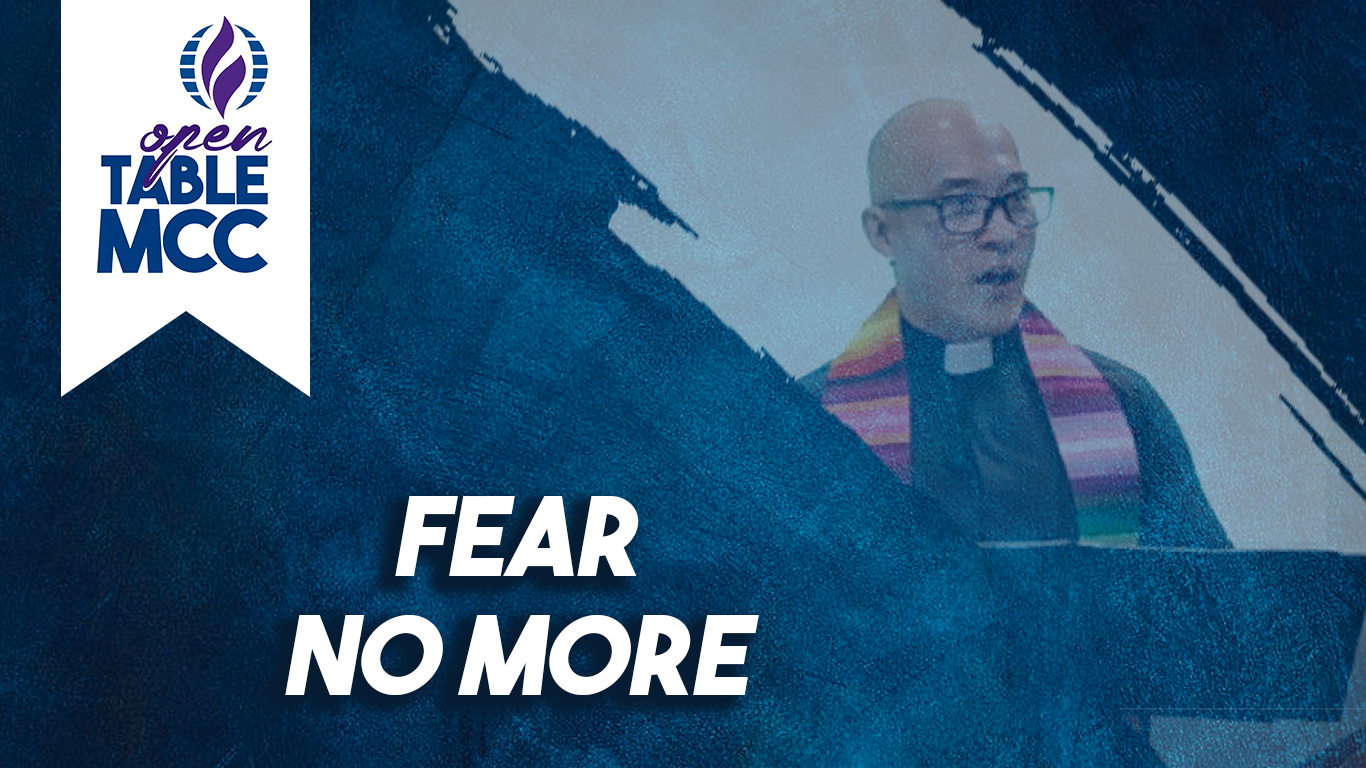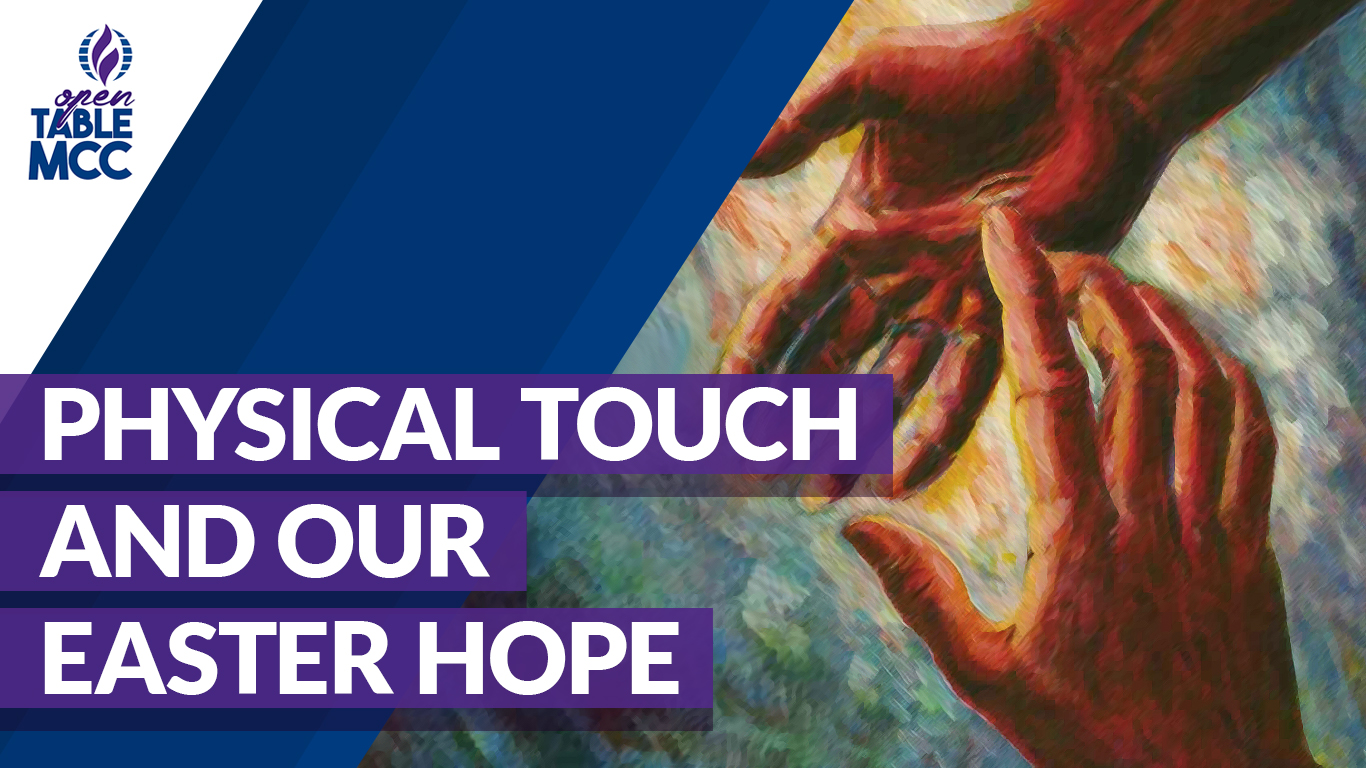When it was evening on that day, the first day of the week, and the doors were locked where the disciples were, for fear of the Jews, Jesus came and stood among them and said, “Peace be with you.” After he said this, he showed them his hands and his side. Then the disciples rejoiced when they saw the Lord. Jesus said to them again, “Peace be with you. As the Father has sent me, so I send you.” When he had said this, he breathed on them and said to them, “Receive the Holy Spirit. If you forgive the sins of any, they are forgiven them; if you retain the sins of any, they are retained.”
But Thomas (who was called the Twin), one of the twelve, was not with them when Jesus came. So the other disciples told him, “We have seen the Lord.” But he said to them, “Unless I see the mark of the nails in his hands and put my finger in the mark of the nails and my hand in his side, I will not believe.”
A week later his disciples were again in the house, and Thomas was with them. Although the doors were shut, Jesus came and stood among them and said, “Peace be with you.” Then he said to Thomas, “Put your finger here and see my hands. Reach out your hand and put it in my side. Do not doubt but believe.” Thomas answered him, “My Lord and my God!” Jesus said to him, “Have you believed because you have seen me? Blessed are those who have not seen and yet have come to believe.”
Now Jesus did many other signs in the presence of his disciples that are not written in this book. But these are written so that you may continue to believe that Jesus is the Messiah, the Son of God, and that through believing you may have life in his name.
John 20:1-18 NRSVUE
Today’s the second Sunday of Easter. In the Catholic tradition, today is Divine Mercy Sunday. We are still on our series “The Gif of Surprise: The Joy of the Unexpected.”
Last week, we have talked about the first of the Gospel of John’s four appearance stories–that of Jesus’ appearance to Mary Magdalene at the tomb. Ngayon, ang chika natin ay sa ikalawa’t ikatlo. Bukod doon, ito rin ang unang ending ng Gospel of John. (Yep. Dalawa ang ending. Next week na natin pagusapan yung ikalawa at bakit may dalawang ending.)
John’s second appearance story (20:19–23) happened on the evening of the same day Mary Magdalene saw Jesus in the tomb in Jerusalem. The Gospel writer described that “the doors were locked where the disciples were, for fear of the Jews.” In that locked room, Jesus appeared and said, “Peace be with you.” He then showed them the wounds in his pierced hands and side. With this, the disciples rejoiced as they recognized their Lord. For the second time, Jesus said “Peace be with you.”
Being at peace in the midst of fear:
In the Greco-Roman world, εἰρήνη, “eiréné,” was commonly understood as the absence of conflict and war. As a warring empire, with rebellions arising all over, peace is a concept highly appreciated. Kaya nga di ba valued ang unang emperor Augustus dahil siya ang nagbigay ng pax Romana, though they did it by silencing the wars and rebellions through massacres and public executions.
“Peace” is beyond that. In the Jewish mind, it is often translated/understood as שָׁלוֹם (shalom) or Salam in Arabic. And Shalom is not just the absence of conflict or a time of peace. It means completeness, welfare, safety, being sound and whole. So, for the Jewish writers, peace, eiréné, shalom, is a divine gift.
Aside from greetings, peace is commonly used in farewells in Jewish culture. It wishes health (welfare) to someone in Hebraic culture. Kaya nga sa John 14:27, sinabi ni Jesus na “Peace I leave with you; my peace I give to you.” Ito ang panahon na sinabi ni Hesus na “In a little while the world will no longer see me.” Nagpapaalam na sya. Kaya uncertain ang mga disipulo.
Christ not merely wishes but gives peace. Sinabi nya rin dito na “I do not give to you as the world gives. Do not let your hearts be troubled, and do not let them be afraid.” A few more chapters after, Jesus continued with his huling habilin. In 16: 33, he said “I have said this to you so that in me you may have peace. In the world you face persecution but take courage: I have conquered the world!” This, then, makes the salutations of Christ after his resurrection (John 20:19, 21, 26) very apt. After the arrest and murder of their teacher, one cannot blame the disciples for hiding because of fear. The public display of the execution of those who went against the state, the empire, will surely cause one to tremble, even suppress their fervent hearts. Will they be targeted next? Who will be up on the cross next?
So, when Jesus came greeting them peace, assuring them that it is indeed him, I imagine the atmosphere of the locked room changing in an instant. “Peace be with you.” Ang lakas ng impact nito. Imagine, nasira na ang ideya ng kapayapaan/peace para sa mga Hudyo dahil sa pax Romana. Here’s Jesus telling them that he’s giving them peace that they have never imagined, a peace that surpasses all understanding.
Peace be with you. Jesus was wishing them safety, welfare. May you be whole, complete. Jesus also said to them, “As the Father has sent me, so I send you.” With the peace that I have given you, may you give it to others as I send you. He then “breathed on them,” giving them life and the Spirit.
In the age that we live in, where the evil seems to triumph, wars and injustices all around. Where populist leaders push their personal agendas and dividing the people. Where farmers struggle for food. Where workers toil but to no avail because the lords of this world prevents them from having shalom – many leaders of this world are the ones preventing Shalom, preventing the completeness or fulness of life for the people – Kabuuan ng buhay ng mga tao. We continue to live in a world where women were being silenced and even denied of freedom over their bodies. A world where queer people live unsure, unsafe, unheard, uncomfortable, and always second guessing themselves.
As we have discussed last week, we said that in the Gospel of John, Jesus still bears the marks the empire gave to him. When he showed the disciples his side and hands, “the Risen One comes to them and shows them His wounds. They were the signs of suffering and pain… yet with Jesus they become channels of mercy and forgiveness, of peace. In his last Easter preaching, Pope Francis appealed to the faithful “not to yield to the logic of fear which only leads to isolation from others, but rather to use the resources available to help the needy, to fight hunger and to encourage initiatives that promote development. These are the ‘weapons’ of peace: weapons that build the future, instead of sowing seeds of death!”
In this world, in this time, we are reminded to take courage because God had conquered the world. God gives peace and not fear, unlike the tyrants of history. The wind, the spirit of God breathes life in the midst of death. Jesus brings peace, shalom, for everyone of us.
Being at Peace in Unbelief:
Thomas, one of the Twelve, was absent when Jesus first appeared to the other disciples. When they told him what had happened, he refused to believe them. He insisted, “Unless I see the mark of the nails in his hands and put my finger in the mark of the nails and my hand in his side, I will not believe” (20:24–25). In the poem of Lawrence Lacambra Ypil, “Touch,” he said
Thomas knew this of course,
when he asked to touch the Lord,
feel where the nails dug deep,
where the spear’s tip bit.
He knew that light,
this sight of hair, mouth, eyes,
would be the first to go,
followed by the memory of His words
till all that would be left
would be the faint sensation
of his finger on the lacerated
resurrected flesh.
His friends, thought him foolish
for demanding such sacrilegious proof,
and named him doubtful
when he was, in truth, the only one
who knew what believing meant
and did not mean.
This moment sets the stage for John’s third resurrection appearance (20:26–29). A week later, the disciples are again gathered behind closed doors when Jesus appears, saying once more, “Peace be with you.” He invites Thomas to touch his wounds, prompting Thomas to declare, “My Lord and my God!”—a profound expression of early Christian faith in the risen Christ.
Throughout Christian history, Thomas has often been portrayed negatively, seen as a symbol of doubt and lack of faith. For many, growing up, being called a “doubting Thomas” was second only to being called a “Judas.” When Jesus said, “Have you believed because you have seen me? Blessed are those who have not seen and yet have come to believe,” this statement of Jesus need not be taken as a rebuke towards Thomas. Instead, this can be understood as an affirmation: those who believe without seeing are also blessed. The narrative itself does not condemn Thomas. He seeks a personal encounter with the risen Jesus rather than relying on others’ accounts—and his request is honored. Jesus appears to him.
The belief in Jesus does not mean a “blind faith.” Thomas was not doubtful. Its not that he didn’t want to believe but perhaps he did not want any false or imagined hope. He wanted to test things out. He likes to ask questions. He wanted some answers but not shallow answers. It was not doubt (and there’s nothing wrong with doubting) but rather a faith that seeks the crucified Lord. Pananampalatayang nagpupursigeng hanapin ang Panginoon. The 14th chapter of John, the same chapter where Jesus was telling the disciples that he will be at his Father’s house but that they have to be not afraid, it was Thomas who asked “Lord, we do not know where you are going. How can we know the way?” With Thomas’ question, Jesus replied with one of his greatest statements in John. “I am the way and the truth and the life.”
The first words of Jesus in John’s gospel are, “What are you looking for?” (1:38); in the heart of the gospel, Jesus says, “I am the way” (14:6). He speaks of this way as “the only way” (14:6) in a verse that has unfortunately often become a triumphalist claim justifying Christian exclusivism. But within John’s incarnational theology, the death and resurrection of Jesus incarnates the way of transformation. This is what it means to say, “Jesus is the only way.” The path we see in him—dying and rising—is the path of personal transformation and with personal transformation, the transformation of our communities, societies, and the world.
Thomas was not doubting; he sought the one who previously said he is the Truth. He sought Truth beyond chismis. He wanted to have deeper reasons to believe. The Gospel writer/s of John even said that they have “written so that you may come to believe that Jesus is the Messiah, the Son of God, and that through believing you may have life in his name” (20:30–31). This passage, likely marking the original conclusion of the gospel, tied the story of Thomas to the purpose of the Gospel. For people to come to know Jesus. Again, in the poem “Touch,”
There were wavelengths
his eyes could never perceive,
frequencies that would never reach
his inner ear.
And faith, he knew, did not lie
in thinking one could understand
what the eye and ear
could not hear or see.
The hands they knew
what faith was–
the held object
holding you.
Hold on to your questions. Keep asking. Seek answers. Seek God beyond easy and shallow answers. Seek Jesus beyond the answers and theologies you already received from your previous churches. I guess that is also the reason why we are here in Open Table. We were not satisfied with the answers we were already given by our former pastors and priests. We started to ask kung totoo ba ang tinuturo nila na masama ang LGBTQIA+. Ako bilang straight woman doing pastoral work, napuno na ang mga tanong ko at at umapaw na ang mga doubts ko that I searched for the risen Lord beyond those who have told me about him. As a teacher in a Bible School, and even in my former church, one of the challenge I saw is when people have questions in their faith and life, they have several reactions: (1) they dismiss the question so they’ll be at peace, (2) they simply lose faith, (3) they face the question head on, not afraid of the cognitive dissonance, bravely struggling towards an authentic faith.
Keep asking and keep doubting. Seek the Lord. Find paths in your journey of faith and unbelief. J.R.R. Tolkien tells us,
All that is gold does not glitter;
Not all who wander are lost.
The old that is strong does not wither.
Deep roots are not reached by the frost.
So do not be guilty trying to wander along. Go, but do it rooted in the timeless truths of life, guided by the wisdoms of the past and diverse voices from many other places you least expect. For thousands of years, we were told to keep quiet, to keep our questions to ourselves. But to seek answers and explore questions is power. The empire does not want us to raise our consciousness and that of people. Do not be guilty with all your questions, and doubts. Even Paul reminded us to “be transformed by the renewing of the mind, so that you may discern what is the will of God—what is good and acceptable and perfect.”
This Divine Mercy Sunday, may we find ourselves being at peace honest to ourselves, being authentic in our faith as we confess “Jesus, God, I trust in you.” Amen.
Podcast: Play in new window | Download
Subscribe: Apple Podcasts | Spotify | RSS



